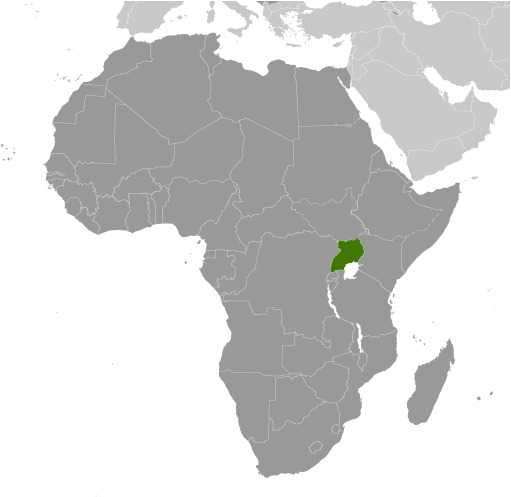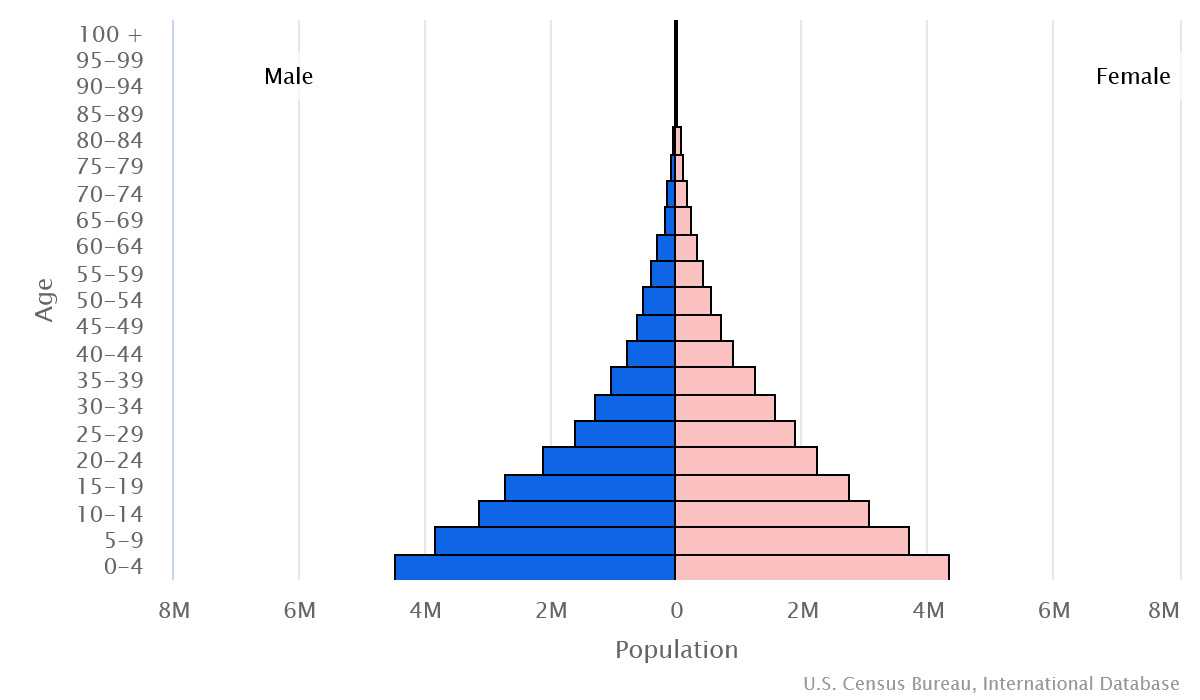Introduction
Background
British influence in Uganda began in the 1860s with explorers seeking the source of the Nile. Uganda's British-created colonial boundaries grouped together many ethnic groups with different political systems and cultures. These differences complicated efforts to establish a cohesive country after independence was achieved in 1962, and Uganda fell under authoritarian rule that led to economic ruin and mass atrocities.
Geography
Area
total: 241,038 sq km
land: 197,100 sq km
water: 43,938 sq km
Climate
tropical; generally rainy with two dry seasons (December to February, June to August); semiarid in northeast
Natural resources
copper, cobalt, hydropower, limestone, salt, arable land, gold
People and Society
Population
total: 49,283,041
male: 24,040,560
female: 25,242,481 (2024 est.)
Ethnic groups
Baganda 16.5%, Banyankole 9.6%, Basoga 8.8%, Bakiga 7.1%, Iteso 7%, Langi 6.3%, Bagisu 4.9%, Acholi 4.4%, Lugbara 3.3%, other 32.1% (2014 est.)
Languages
English (official language, taught in schools, used in courts of law and by most newspapers and some radio broadcasts), Ganda or Luganda (most widely used of the Niger-Congo languages and the language used most often in the capital), other Niger-Congo languages, Nilo-Saharan languages, Swahili (official), Arabic
Religions
Protestant 45.1% (Anglican 32.0%, Pentecostal/Born Again/Evangelical 11.1%, Seventh Day Adventist 1.7%, Baptist .3%), Roman Catholic 39.3%, Muslim 13.7%, other 1.6%, none 0.2% (2014 est.)
Population growth rate
3.18% (2024 est.)
Government
Government type
presidential republic
Capital
name: Kampala
Executive branch
chief of state: President Yoweri Kaguta MUSEVENI (since 26 January 1986)
head of government: President Yoweri Kaguta MUSEVENI (since 26 January 1986)
Legislative branch
description: unicameral National Assembly or Parliament (556 seats; 353 members directly elected in single-seat constituencies by simple majority vote, 146 for women directly elected in single-seat districts by simple majority vote, and 30 "representatives" reserved for special interest groups - army 10, disabled 5, youth 5, labor 5, older persons 5; 27 ex officio members appointed by the president; members serve 5-year terms)
Economy
Economic overview
low-income, primarily agrarian East African economy; COVID-19 hurt economic growth and poverty reduction; lower oil prices threaten prior sector investments; endemic corruption; natural resource rich; high female labor force participation but undervalued
Real GDP (purchasing power parity)
$107.733 billion (2022 est.)
$103.007 billion (2021 est.)
$99.488 billion (2020 est.)
Real GDP per capita
$2,300 (2022 est.)
$2,200 (2021 est.)
$2,200 (2020 est.)
Agricultural products
plantains, sugarcane, maize, cassava, milk, sweet potatoes, beans, vegetables, rice, coffee (2022)
Industries
sugar processing, brewing, tobacco, cotton textiles; cement, steel production
Exports
$6.058 billion (2022 est.)
$6.174 billion (2021 est.)
$5.563 billion (2020 est.)
Exports - partners
UAE 31%, India 12%, Hong Kong 9%, Kenya 8%, Italy 7% (2022)
Exports - commodities
gold, coffee, fish, milk, raw sugar (2022)
Imports
$11.145 billion (2022 est.)
$10.686 billion (2021 est.)
$10.209 billion (2020 est.)
Imports - partners
China 23%, Kenya 15%, India 13%, UAE 7%, Tanzania 6% (2022)
Imports - commodities
vaccines, packaged medicine, plastic products, cars, motorcycles and cycles (2022)
Exchange rates
Ugandan shillings (UGX) per US dollar -
Exchange rates:
3,689.817 (2022 est.)
3,587.052 (2021 est.)
3,718.249 (2020 est.)
3,704.049 (2019 est.)
3,727.069 (2018 est.)
Page last updated: Wednesday, June 26, 2024




